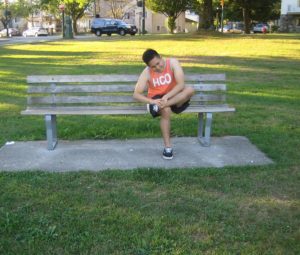Chronic lateral ankle pain has various causes that you should be familiar with. Chronic or recurrent discomfort on the exterior side of the ankle often arises after damage such as an ankle sprain.
Indications
- Pain, usually on the exterior side of the ankle that might be significant that there is difficulty walking or participating in sports. In some instances, the pain is a continuous, dull ache.
- Stiffness
- Swelling
The usual reason for chronic lateral ankle pain is partial healing after an ankle sprain. - Instability
- Difficulty walking on uneven terrain or when using high heels
- Tenderness
- Repeated ankle sprains
What are the causes?
The usual reason for chronic lateral ankle pain is partial healing after an ankle sprain. Once the ankle is sprained, the connecting tissue amidst the bones is torn or stretched. If rehabilitation is not thorough and complete, the ligament or surrounding muscles might stay weak which results to recurrent instability. As an outcome, the individual is at risk for additional ankle injuries.
Other causes of chronic lateral ankle pain include:
- Damage to the nerves that move into the ankle. The nerves might be torn, stretched or damaged by a direct blow or crushed under pressure.
- Torn or inflamed tendon
- Arthritis of the ankle
- Inflammation of the joint lining
- Fracture in one of the bones comprising the ankle joint
- Formation of scar tissue in the ankle after a sprain. This scar tissue takes up space within the joint, thus placing pressure on the ligaments.
Management of chronic lateral ankle pain
The treatment is based on the diagnosis of the doctor and tailored to the specific needs of the individual. Both conservative and surgical approach might be used.
The conservative measures include:
- Anti-inflammatory medications such as ibuprofen or aspirin to alleviate the swelling.
- Physical therapy aims on firming the muscles, reestablishing range of motion and recovering perception of joint alignment
- Steroid injections
- Ankle brace or other support
- Immobilization of a fracture to allow healing of the bone
Surgical approach
In case chronic lateral ankle pain could not be relieved with conservative treatment, the doctor might suggest surgery. Generally, surgery can be done in an outpatient basis. Some of the procedures utilize arthroscopic techniques while others require open surgery. The rehabilitation might take 6-10 weeks to ensure complete healing.

